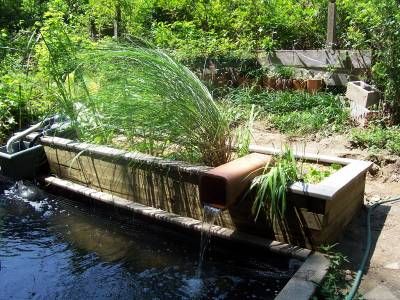Welcome to our comprehensive guide on building a pond bog filter! If you’re a pond enthusiast looking to improve water quality and create a thriving ecosystem, a bog filter is an excellent addition to your pond setup. In this article, we will walk you through the process of building a pond bog filter step by step, so you can enjoy crystal-clear water and happy, healthy aquatic life in your pond.
Affordable Built-In Pond Bog Filter Of All
Top-Rated Pond Bog Filter Under 80$ – Best Choice
What is a Pond Bog Filter?
A pond bog filter, also known as a wetland filter, is a natural filtration system that helps to clean and purify the water in your pond. By the way, if you want to know how to build a pond bog then check our previous article about that. It consists of a shallow, gravel-filled area planted with aquatic vegetation, such as cattails, rushes, and water lilies. As water flows through the bog filter, beneficial bacteria and plant roots work together to remove impurities, excess nutrients, and pollutants from the water, creating a balanced and healthy aquatic environment.
Materials Needed
Before you start building your pond bog filter, gather the following materials:
- Large pond liner
- Shovel
- Gravel
- Aquatic plants
- PVC piping
- Pond pump
- Waterproof sealant
Step 1: Choose the Location
First, select a suitable location for your pond bog filter. Ideally, it should be situated near the edge of your pond to allow for easy water flow. Ensure that the area receives ample sunlight for the aquatic plants to thrive.
Step 2: Dig the Trench
Using a shovel, dig a shallow trench in the chosen location. The size of the trench will depend on the dimensions of your pond and the desired capacity of the bog filter. Make sure the trench is level and sloped slightly to encourage water flow.

Credit: paigepuckett.com
Step 3: Install the Pond Liner
Line the trench with a large pond liner to prevent water from seeping into the surrounding soil. Ensure that the liner is securely anchored and has enough overlap on the edges to contain the gravel and plants.
Step 4: Add Gravel
Fill the lined trench with a layer of gravel. The gravel will serve as the growing medium for the aquatic plants and provide a habitat for beneficial bacteria to thrive.
Step 5: Plant Aquatic Vegetation
Plant a variety of aquatic vegetation, such as cattails, rushes, and water lilies, in the gravel-filled trench. These plants will help filter the water, absorb nutrients, and provide oxygen for fish and other aquatic life.
Step 6: Install the PVC Piping
Insert PVC piping into the gravel bed to create a network of channels for water to flow through. This piping will help distribute water evenly across the bog filter and prevent stagnation.
Step 7: Connect the Pond Pump
Connect a pond pump to the PVC piping to circulate water through the bog filter. The pump will help maintain a constant flow of water, ensuring effective filtration and oxygenation of the pond water.

Credit: www.youtube.com
Step 8: Seal the Edges
Use waterproof sealant to secure the edges of the pond liner and prevent water from leaking out of the bog filter. Ensure that the sealant is applied evenly and allowed to dry completely before filling the filter with water.
Step 9: Test the Bog Filter
Before introducing fish or other aquatic life, test the bog filter to ensure that it is functioning properly. Check the water quality regularly and make any necessary adjustments to the filter to maintain optimal conditions for your pond ecosystem.
Benefits of a Pond Bog Filter
Building a pond bog filter offers numerous benefits for your pond ecosystem, including:
- Natural water purification
- Improved water clarity
- Reduction of algae growth
- Enhanced habitat for aquatic life
- Low maintenance requirements
Conclusion
By following this step-by-step guide, you can create a pond bog filter that will enhance the health and beauty of your pond. Enjoy the benefits of clean, clear water, thriving aquatic plants, and happy fish in your very own backyard oasis!







